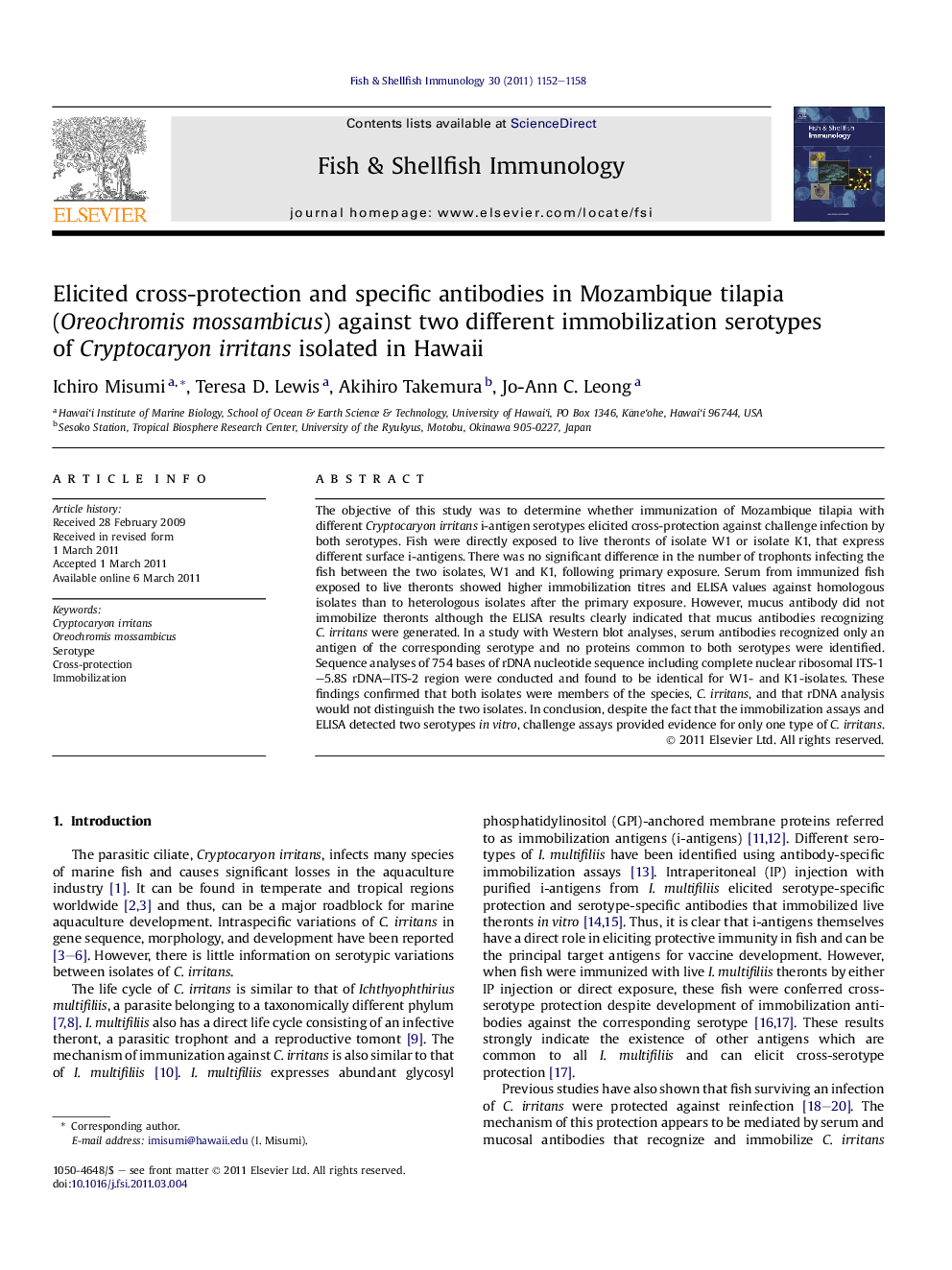| Article ID | Journal | Published Year | Pages | File Type |
|---|---|---|---|---|
| 2432458 | Fish & Shellfish Immunology | 2011 | 7 Pages |
The objective of this study was to determine whether immunization of Mozambique tilapia with different Cryptocaryon irritans i-antigen serotypes elicited cross-protection against challenge infection by both serotypes. Fish were directly exposed to live theronts of isolate W1 or isolate K1, that express different surface i-antigens. There was no significant difference in the number of trophonts infecting the fish between the two isolates, W1 and K1, following primary exposure. Serum from immunized fish exposed to live theronts showed higher immobilization titres and ELISA values against homologous isolates than to heterologous isolates after the primary exposure. However, mucus antibody did not immobilize theronts although the ELISA results clearly indicated that mucus antibodies recognizing C. irritans were generated. In a study with Western blot analyses, serum antibodies recognized only an antigen of the corresponding serotype and no proteins common to both serotypes were identified. Sequence analyses of 754 bases of rDNA nucleotide sequence including complete nuclear ribosomal ITS-1–5.8S rDNA–ITS-2 region were conducted and found to be identical for W1- and K1-isolates. These findings confirmed that both isolates were members of the species, C. irritans, and that rDNA analysis would not distinguish the two isolates. In conclusion, despite the fact that the immobilization assays and ELISA detected two serotypes in vitro, challenge assays provided evidence for only one type of C. irritans.
